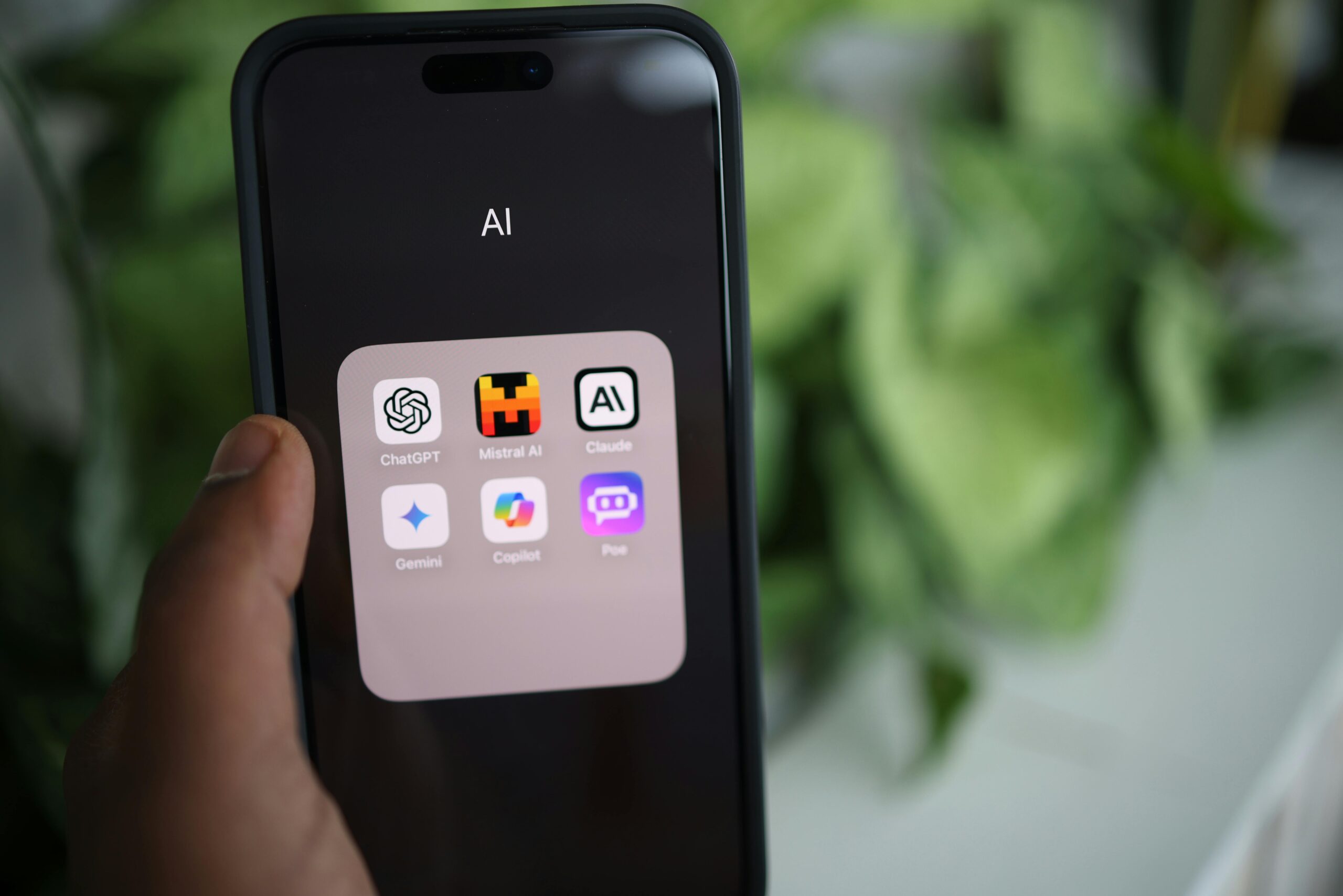Impactful 2025 Tech Trends for Business Growth
The Digital Frontier: Navigating the Most Impactful 2025 Tech Trends for Business Growth
Estimated reading time: 10 minutes
Key Takeaways
- The 2025 tech trends, encompassing AI automation, advanced web development, and mobile innovation, are crucial for business growth and demand strategic adaptation.
- Modern web development prioritizes speed, scalability (via Next.js, React, headless CMS, micro frontends), and AI-powered personalization to deliver superior user experiences.
- Cross-platform mobile frameworks such as Flutter and React Native, combined with user-centric, accessible UI/UX design, are essential for efficient mobile app development.
- Cloud computing strategies, including serverless architecture and migration planning, alongside robust DevOps practices like CI/CD automation, provide the foundational infrastructure for scalable, efficient, and agile software delivery.
- AI automation, ranging from low-effort features and no-code tools to advanced chatbots and AI-generated content, offers significant return on investment by optimizing workflows and enhancing customer service.
Table of Contents
- Decoding the 2025 Tech Trends: A Strategic Playbook for Business Growth
- 1. The Evolving Landscape of Web Development: Speed, Scalability, and Smarter Experiences
- 2. Mobile App Innovation: Cross-Platform Powerhouses and Intuitive Design
- 3. Cloud Computing & DevOps: The Backbone of Scalability and Efficiency
- 4. AI Automation for Businesses: Intelligence in Action
- 5. Modern UI/UX Design: Beyond Aesthetics, Towards Inclusion and Performance
- Practical Takeaways for Driving Digital Transformation
- Partnering for the Future with AITechScope
- FAQ
The digital world is evolving at an unprecedented pace, and for businesses aiming not just to survive but to thrive, understanding the currents of innovation is paramount. We stand on the cusp of significant transformations, and the 2025 tech trends are already shaping how companies operate, interact with customers, and drive growth. From the intricate shifts in web development to the revolutionary advancements in AI automation, staying informed and adaptable is no longer an option—it’s a necessity.
At AITechScope, we believe in empowering businesses to harness these cutting-edge technologies. Our mission is to demystify complex trends and provide practical pathways for integration, specializing in AI-powered automation, n8n workflow development, and comprehensive business process optimization. As we delve into the digital horizon of 2025, consider this your strategic playbook for leveraging the future, today.
Decoding the 2025 Tech Trends: A Strategic Playbook for Business Growth
The landscape of technology is a dynamic tapestry woven with threads of innovation, efficiency, and user-centric design. For business professionals, entrepreneurs, and tech-forward leaders, navigating these trends requires a clear understanding of their potential impact and practical applications. Let’s dissect the core developments shaping our digital future.
1. The Evolving Landscape of Web Development: Speed, Scalability, and Smarter Experiences
Web development is no longer just about building a presence; it’s about crafting performant, scalable, and intelligent digital experiences. The web development trends for 2025 emphasize speed, interactivity, and a modular approach.
Next.js and React Performance: The Foundation of Modern Web Experiences
In an age where every millisecond counts, page load speed is critical for user retention and SEO. Next.js continues to dominate as a powerhouse for building fast, scalable web applications, especially for marketing sites and e-commerce platforms. For small businesses, Next.js offers a compelling proposition: “Build a Fast Marketing Site in One Weekend”, leveraging server-side rendering (SSR) and static site generation (SSG) to deliver blazing-fast initial loads and superior SEO performance.
Beyond Next.js, optimizing React applications themselves is crucial. Simple React performance fixes, such as memoization, lazy loading components, and optimizing image delivery, can “Reduce Page Load by Seconds,” directly impacting user experience and conversion rates. Our work at AITechScope frequently involves analyzing client websites to identify and implement these critical optimizations, such as a “Real-World Case Study: How We Cut Page Load by 60% for a Client” by refactoring components and streamlining data fetching.
Headless CMS and AI-Powered Web Apps: Beyond Traditional Content Management
The rise of headless CMS platforms, like “WordPress Without the Bloat” when decoupled, offers unparalleled flexibility. By separating the content backend from the frontend presentation layer, businesses can deliver content to any device or platform, from web apps to mobile apps, ensuring a consistent brand experience. This approach, combined with the power of AI, is ushering in an era of AI-powered web apps. Imagine dynamic content personalization, AI-driven search, and intelligent recommendation engines seamlessly integrated into your website, creating uniquely tailored experiences for each visitor.
Micro Frontends: Scalability for Complex Applications
For larger enterprises and complex SaaS products, micro frontends are gaining traction. This architectural pattern breaks down monolithic frontends into smaller, independently deployable units, allowing different teams to work on distinct parts of an application simultaneously. While offering benefits in scalability and team autonomy, it’s crucial to understand “Micro Frontends: When They Help and When They Hurt (Practical Examples)” to avoid unnecessary complexity.
- Practical Takeaway for Businesses: Prioritize web performance by adopting modern frameworks like Next.js and optimizing existing React applications. Explore headless CMS solutions for content flexibility and consider integrating AI features for personalized user experiences. AITechScope helps businesses design and develop high-performance websites, integrating AI functionalities and optimizing existing digital assets for speed and scalability.
2. Mobile App Innovation: Cross-Platform Powerhouses and Intuitive Design
Mobile app development in 2025 is characterized by the continued dominance of cross-platform frameworks and a relentless focus on intuitive, performant user interfaces.
Flutter vs. React Native in 2025: The Cross-Platform Showdown
The debate between Flutter and React Native remains central to cross-platform mobile development. Both frameworks enable developers to build native-like applications for iOS and Android from a single codebase, drastically reducing development time and cost. For startups and businesses looking to launch quickly, “React Native vs Flutter in 2025: Which Is Best for Your Business App?” depends on factors like existing team expertise, specific feature requirements, and long-term maintenance goals. Flutter, with its excellent performance and declarative UI, is increasingly popular for creating aesthetically rich and performant apps, as demonstrated in guides like “Build a Simple Cross-Platform App with Flutter: From Idea to Play Store.”
Mobile App UI Trends: Accessibility and Seamless Experiences
Beyond the framework choice, modern mobile app UI trends emphasize accessibility, responsiveness, and a seamless user journey. Designing intuitive interfaces that cater to diverse users, including those with disabilities, is becoming a standard expectation. This translates to principles like “Designing Accessible Buttons: A Non-Designer’s Guide (Figma Tips),” ensuring that every interactive element is clear, usable, and inclusive.
- Practical Takeaway for Businesses: For new app development, consider cross-platform frameworks like Flutter or React Native to accelerate time-to-market and reduce costs. Invest in modern UI/UX design principles, prioritizing accessibility and user-centricity to enhance engagement. AITechScope offers consulting on mobile strategy and can help integrate AI functionalities into your mobile applications for enhanced user experience and functionality.
3. Cloud Computing & DevOps: The Backbone of Scalability and Efficiency
The cloud is no longer a luxury but a fundamental component of modern IT infrastructure. Cloud computing and DevOps practices are converging to deliver unparalleled scalability, reliability, and speed in software delivery.
Cloud Migration and Serverless Architecture: Agile Infrastructure
For many businesses, the challenge lies in migrating existing legacy applications to the cloud without disruption. “How to Move Your Legacy App to the Cloud Without Breaking It” requires careful planning, often involving containerization, microservices, and a phased approach. Once in the cloud, serverless architecture represents the pinnacle of cost-efficiency and auto-scaling. “Serverless on AWS: Create a Cost-Efficient Backend That Scales Automatically” allows businesses to pay only for the compute resources consumed, eliminating idle server costs and simplifying operational overhead, making it an ideal “serverless backend for startups” or “serverless AWS cost example” for optimizing spend.
DevOps Best Practices and CI/CD Automation: Accelerating Innovation
DevOps methodologies, coupled with robust CI/CD (Continuous Integration/Continuous Deployment) pipelines, are transforming how software is developed and delivered. For small teams, implementing “CI/CD for Small Teams: Automated Deployments Without the Headache” using tools like GitHub Actions can dramatically improve deployment frequency and reliability, moving away from manual, error-prone processes. This CI/CD automation ensures that code changes are continuously tested and deployed, leading to faster innovation cycles and higher quality software. The move towards microservices architecture further complements DevOps, allowing independent development and deployment of small, focused services, enhancing agility.
- Practical Takeaway for Businesses: Develop a clear cloud migration strategy for legacy systems. Embrace serverless architectures for new projects to optimize costs and achieve infinite scalability. Implement CI/CD pipelines to automate deployments and accelerate your development cycles. AITechScope provides expert cloud migration strategy and DevOps consulting, helping businesses establish efficient CI/CD automation and optimize their infrastructure for performance and cost.
4. AI Automation for Businesses: Intelligence in Action
Perhaps the most impactful of the 2025 tech trends is the pervasive integration of artificial intelligence into business operations. AI automation for businesses is moving beyond theoretical discussions into practical, everyday applications that deliver tangible ROI.
Low-Effort AI Features for SaaS and No-Code Automation:
SaaS providers are discovering that even “3 Low-Effort AI Features That Delight Users” can significantly enhance product value and user engagement. These might include intelligent search, content summarization, or proactive suggestions within an application. The power of AI is also being democratized through no-code tools. Businesses can now “Automate Repetitive Tasks with No-Code Tools + AI (Save 5–10 Hours/Week),” streamlining everything from data entry and lead qualification to customer support.
Chatbot Automation: The New Face of Customer Service
AI-powered chatbots are transforming customer interactions, offering instant support, answering FAQs, and even guiding users through complex processes. For small businesses, chatbots are a game-changer, providing 24/7 assistance without significant overhead. “How Small Businesses Use Chatbots to Save Time: Real Workflows That Work” illustrates how these intelligent agents can handle initial inquiries, qualify leads, and even schedule appointments, freeing up human staff for more complex tasks. This chatbot automation is vital for scaling customer service efficiently.
AI-Generated Content and Voice AI: Expanding Creative Horizons
The advent of advanced generative AI models is revolutionizing content creation. Voice AI companies like ElevenLabs are pushing boundaries, now allowing authors to “create and publish audiobooks on its own platform,” demonstrating the power of AI-generated audio for content production and accessibility. This trend extends to AI-powered writing assistants, image generation, and video editing, opening new avenues for marketing, education, and entertainment.
- Practical Takeaway for Businesses: Identify repetitive tasks ripe for automation using no-code AI tools. Implement AI chatbots for improved customer service and lead generation. Explore how AI-generated content can augment your marketing and content creation efforts. AITechScope is at the forefront of this revolution, specializing in AI-powered automation and n8n workflow development. We build custom AI solutions and virtual assistants that optimize workflows, reduce operational costs, and drive significant efficiencies across your business.
5. Modern UI/UX Design: Beyond Aesthetics, Towards Inclusion and Performance
While often seen as a visual discipline, modern UI/UX design in 2025 is deeply intertwined with functionality, performance, and accessibility, making it critical for enterprise digital adoption.
Accessibility as a Core Principle:
As highlighted earlier with “Designing Accessible Buttons,” creating inclusive digital experiences is no longer an afterthought but a fundamental requirement. Good UI/UX ensures that all users, regardless of ability, can easily navigate and interact with your digital products. This improves not only ethical standing but also expands market reach and enhances overall usability.
User-Centricity and Responsive Design:
The core of modern UI/UX remains user-centricity. Understanding user journeys, pain points, and preferences informs every design decision. Coupled with responsive UI design, which ensures seamless adaptation across various devices and screen sizes, businesses can provide consistent and engaging experiences wherever their customers are. Poor UI/UX can hinder even the most technologically advanced solutions, making it a critical component of any successful digital transformation strategy.
- Practical Takeaway for Businesses: Prioritize user-centric and accessible design in all your digital initiatives. Invest in responsive UI to ensure a consistent experience across devices. Understand that good UI/UX is an investment in user satisfaction and ultimately, business growth. AITechScope integrates best-in-class UI/UX principles into all its website development and AI solution deployments, ensuring that your tech investments are not only powerful but also intuitive and user-friendly.
Practical Takeaways for Driving Digital Transformation
To truly capitalize on the 2025 tech trends and achieve successful digital transformation strategies, businesses must adopt a proactive and integrated approach:
- Embrace AI Strategically: Don’t just implement AI for the sake of it. Identify specific pain points or opportunities where AI can deliver clear value, whether it’s automating tasks, enhancing customer interactions, or personalizing experiences. Start with “Digital Transformation on a Budget: 7 Steps Small Companies Can Start Today” by targeting low-effort, high-impact AI features.
- Invest in Performance and User Experience: Speed, responsiveness, and intuitive design are non-negotiable. Regular audits of your web and mobile platforms are essential to ensure they meet modern performance benchmarks and user expectations.
- Optimize Your Cloud Infrastructure: Leverage the scalability and cost-efficiency of cloud computing. Explore serverless options and continually refine your DevOps practices for faster, more reliable software delivery.
- Prioritize Automation: Beyond AI, look for opportunities to automate repetitive, manual tasks across all departments. Tools like n8n, which AITechScope specializes in, can integrate various systems and streamline complex workflows, offering significant workflow automation tools benefits.
- Foster a Culture of Continuous Learning: The tech landscape will continue to evolve rapidly. Encourage your teams to stay informed, experiment with new tools, and adapt to emerging technologies.
Partnering for the Future with AITechScope
The year 2025 and beyond promise an era of unprecedented technological advancement. Navigating these tech innovation for small businesses and large enterprises alike requires expertise, foresight, and a partner committed to your success.
At AITechScope, we are more than just a service provider; we are your strategic partner in digital transformation. We specialize in demystifying the complexities of AI, cloud, and modern web development, offering tailored solutions that directly impact your bottom line. Our expertise in AI automation for businesses, n8n workflow development, and virtual assistant services empowers you to scale operations, reduce costs, and enhance efficiency through intelligent delegation and automation. Whether it’s building a “Next.js small business site,” implementing robust CI/CD automation, or developing AI chatbots for customer service, we provide the guidance and execution to turn these trends into tangible business advantages.
Don’t let the rapid pace of technological change overwhelm you. Instead, view it as an opportunity to innovate, optimize, and lead.
Ready to transform your business with cutting-edge AI automation and digital solutions?
Contact AITechScope Today to discover how our AI automation and consulting services can help you leverage the latest 2025 tech trends for unparalleled growth and efficiency. Let us help you build smarter, faster, and more resilient operations for the future.
FAQ
- Q: What are the most impactful 2025 tech trends for business growth?
A: The most impactful trends for 2025 include widespread AI automation, advancements in web development focusing on speed and personalization, innovative mobile app development (especially cross-platform), robust cloud computing and DevOps practices, and user-centric, accessible UI/UX design. - Q: How can businesses leverage AI automation for tangible ROI?
A: Businesses can leverage AI automation by identifying repetitive tasks suitable for no-code tools, implementing AI chatbots for customer service and lead generation, and exploring AI-generated content for marketing. Starting with low-effort, high-impact AI features can deliver clear value and ROI. - Q: Why is web performance critical in modern web development?
A: Web performance is critical because page load speed directly impacts user retention, engagement, and SEO. Modern frameworks like Next.js and optimization techniques (memoization, lazy loading) are essential for building fast, scalable, and intelligent digital experiences that convert visitors into customers. - Q: What is the role of cloud computing and DevOps in business scalability?
A: Cloud computing provides the infrastructure for infinite scalability and cost efficiency, especially with serverless architectures. DevOps practices, including CI/CD automation, ensure faster, more reliable software delivery and deployment, which is crucial for agile development and rapid innovation. - Q: How does modern UI/UX design contribute to enterprise digital adoption?
A: Modern UI/UX design, with its focus on user-centricity, responsiveness, and accessibility, ensures that digital products are intuitive and usable for all. Good design enhances user satisfaction, facilitates easier adoption of new technologies within an enterprise, and ultimately drives business growth by improving overall user experience.







